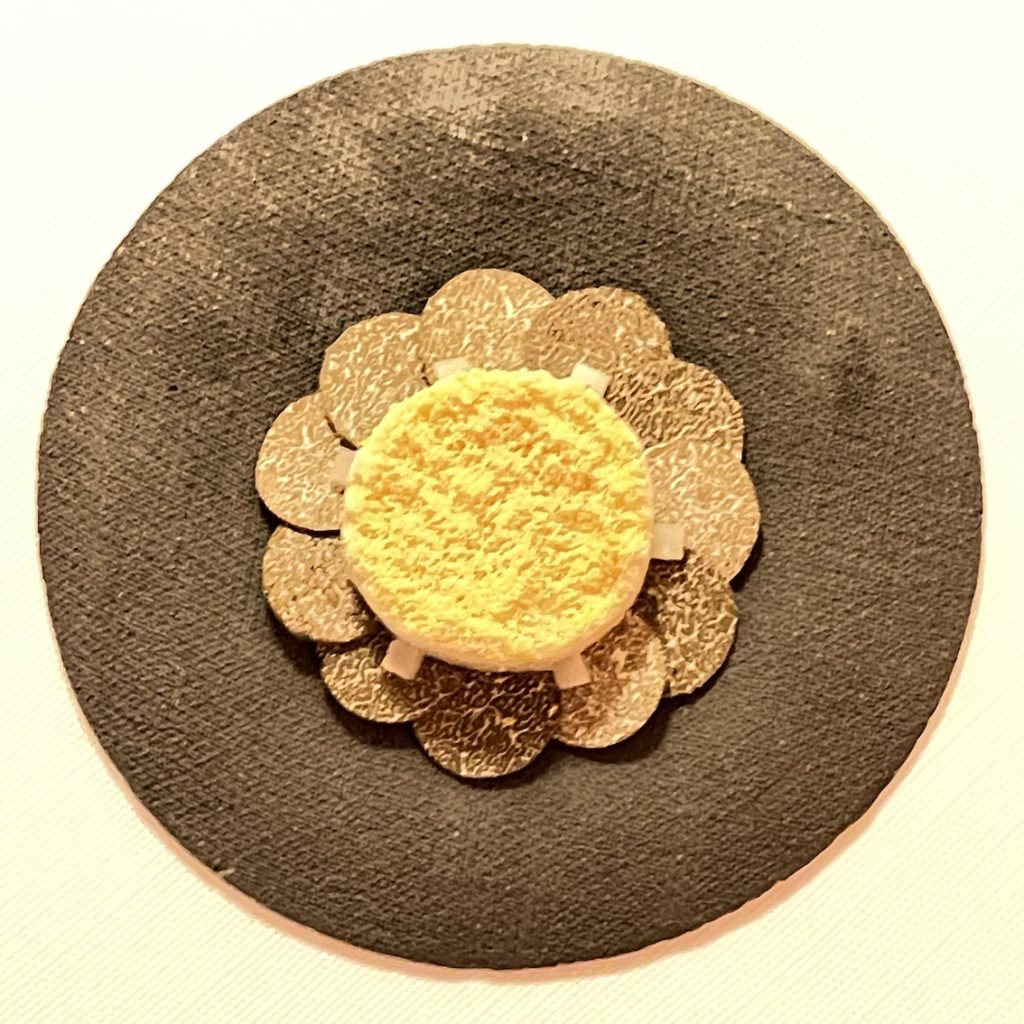Friday, August 26
We arrived at the Vienna airport, where we’d booked a nearby hotel in Schwechat, the “Millbrae of Vienna”. We drove to a restaurant there, which turned out to be very nice, especially the chanterelle soup. (Over the next few days, we found that chanterelles were the happening thing at the moment, and they were on many menu chalkboards.). The goulash, mixed salad, and poppy seed cake were good too. The hotel was pretty straightforward, except that the drain pipe on the bathroom sink was a bit disconnected, and water drained all over the floor until we popped it back in place.
Saturday, August 27
We had breakfast at Caffe Trieste, which had a photo blown up to cover the entire wall, of a scene that has caused me much wondering. It’s meant to depict the 1960’s but it has a 2020 sensibility. Compromise: it’s probably from the 1980’s.
The drive to Kobarid was methodical. Four hours on the Austrian autobahn, followed by one hour on tiny roads through beautiful Italian and Slovenian Alps. You have to psych yourself up for meals which are major artistic performance pieces by artists of the caliber of Ana Ros. We met our Berlin friends Lindsay and Kevin there. The meal itself lasted more than four hours. The whole thing consisted of several tiny pours of wine and perhaps fifteen or twenty bites of food, but at the end you feel more satiated than if you’d eaten a whole tray of lasagna. I don’t know how that works. Appetite is not well understood. Hisa Franko has guest rooms, so that after all the wine (and before- and after-dinner drinks) you can just walk upstairs and sleep it all off.
There’s a budget point at which you stop gaining weight. At the limiting case, spending an infinite amount of money on food, you would starve, because your meal would consist of an army of waiters repeatedly telling you how to eat a single molecule of air in one bite.
I won’t say the meal was indescribable, because every dish was described to us in perfect detail. Like Ferrán Adriá and Linus Torvalds, Ana Ros is open source: everything is in the cookbooks and every ingredient is on the menu for allergenic or perhaps forensic purposes (wouldn’t you love to read a murder mystery set at a tasting menu gastro pub?) If you could get the single-sourced trout from that one stream in the Austrian Littoral, and had a microtome to divide it, and the apples I saw the waiter picking in the afternoon, and the radish that probably didn’t come from Safeway or even Sigona’s, into a night’s worth of isinglass components, you could make that one dish. And Ms. Ros would tell you what went into the Toasted Yeast Water.


No, I’m saying I am not smart enough to describe it. Hisa Franko is good. You should go there. Save up your money. Pretty countryside.
Sunday, August 28
Staying at Hisa Franko includes breakfast. Breakfast is normal food. The most outré gastronomes want to have granola and juice in the morning, as they have every morning since they were in grade school. Dave ordered an omelet. It was perfectly constructed.
We left Hisa Franko and started back up the Soca valley towards Austria. We stopped and Dave looked at the multicolored trees on the slopes opposite us, and said “fall colors”. I said, “no, drought colors”. We continued, and headed back across Austria, going a different way. Dave is CarPlaying a lot of tracks by Wobbly and allied orchestras, as a way to avoid being totally immersed in foreign cultures which are most likely Ralph Spoilsport-influenced car commercials anyway. Every now and again he has to turn off the audio just as a way of checking that the samples being played are not in fact a car malfunction. Music has come a long way since the well defined conventions of Haydn, or Dogon tribal dance. There were always many more traditions than AM radio recognized, but none of them sounded like bearing failures. In a good way.